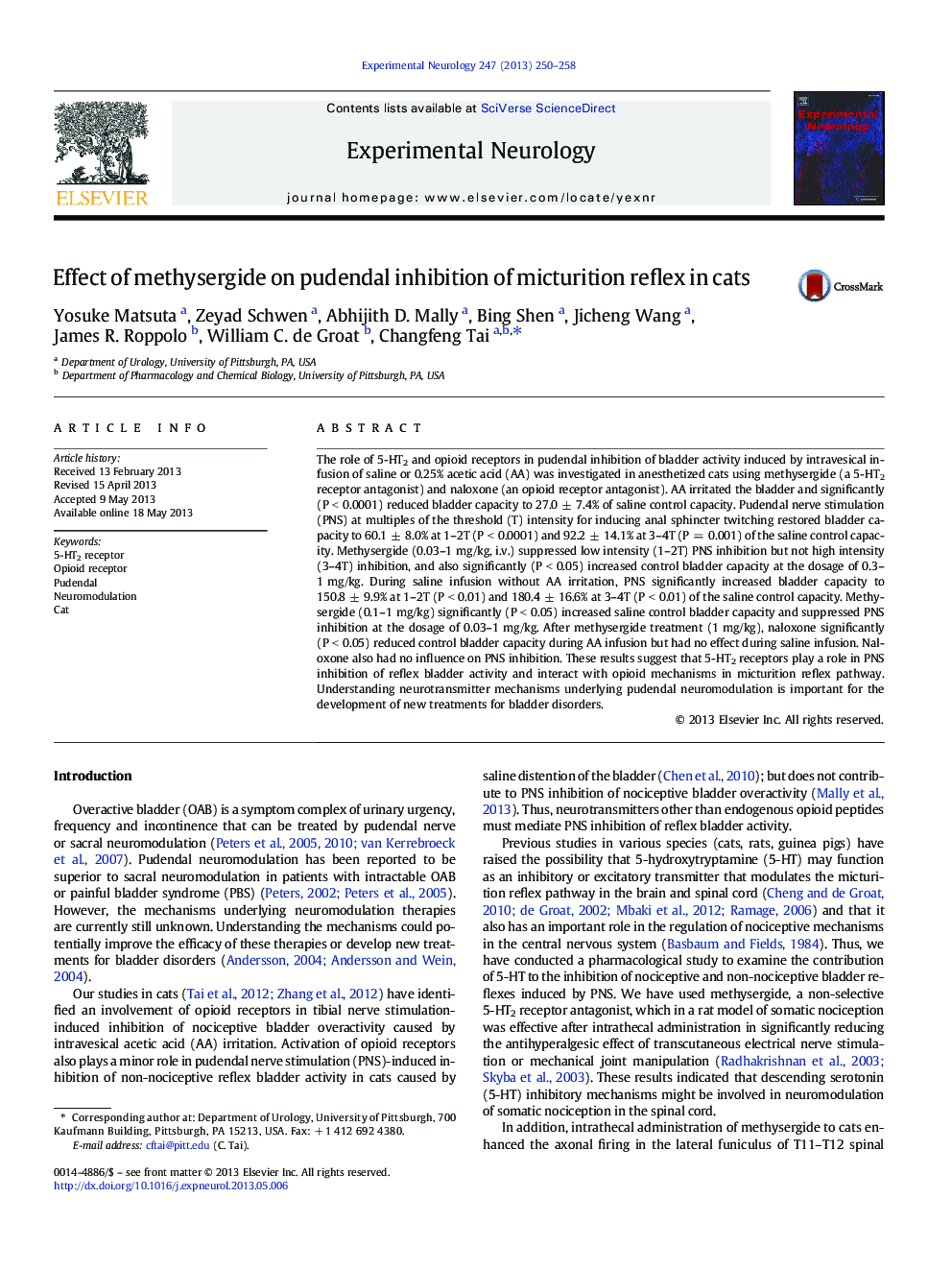| Article ID | Journal | Published Year | Pages | File Type |
|---|---|---|---|---|
| 6018289 | Experimental Neurology | 2013 | 9 Pages |
Abstract
The role of 5-HT2 and opioid receptors in pudendal inhibition of bladder activity induced by intravesical infusion of saline or 0.25% acetic acid (AA) was investigated in anesthetized cats using methysergide (a 5-HT2 receptor antagonist) and naloxone (an opioid receptor antagonist). AA irritated the bladder and significantly (P < 0.0001) reduced bladder capacity to 27.0 ± 7.4% of saline control capacity. Pudendal nerve stimulation (PNS) at multiples of the threshold (T) intensity for inducing anal sphincter twitching restored bladder capacity to 60.1 ± 8.0% at 1-2T (P < 0.0001) and 92.2 ± 14.1% at 3-4T (P = 0.001) of the saline control capacity. Methysergide (0.03-1 mg/kg, i.v.) suppressed low intensity (1-2T) PNS inhibition but not high intensity (3-4T) inhibition, and also significantly (P < 0.05) increased control bladder capacity at the dosage of 0.3-1 mg/kg. During saline infusion without AA irritation, PNS significantly increased bladder capacity to 150.8 ± 9.9% at 1-2T (P < 0.01) and 180.4 ± 16.6% at 3-4T (P < 0.01) of the saline control capacity. Methysergide (0.1-1 mg/kg) significantly (P < 0.05) increased saline control bladder capacity and suppressed PNS inhibition at the dosage of 0.03-1 mg/kg. After methysergide treatment (1 mg/kg), naloxone significantly (P < 0.05) reduced control bladder capacity during AA infusion but had no effect during saline infusion. Naloxone also had no influence on PNS inhibition. These results suggest that 5-HT2 receptors play a role in PNS inhibition of reflex bladder activity and interact with opioid mechanisms in micturition reflex pathway. Understanding neurotransmitter mechanisms underlying pudendal neuromodulation is important for the development of new treatments for bladder disorders.
Related Topics
Life Sciences
Neuroscience
Neurology
Authors
Yosuke Matsuta, Zeyad Schwen, Abhijith D. Mally, Bing Shen, Jicheng Wang, James R. Roppolo, William C. de Groat, Changfeng Tai,
